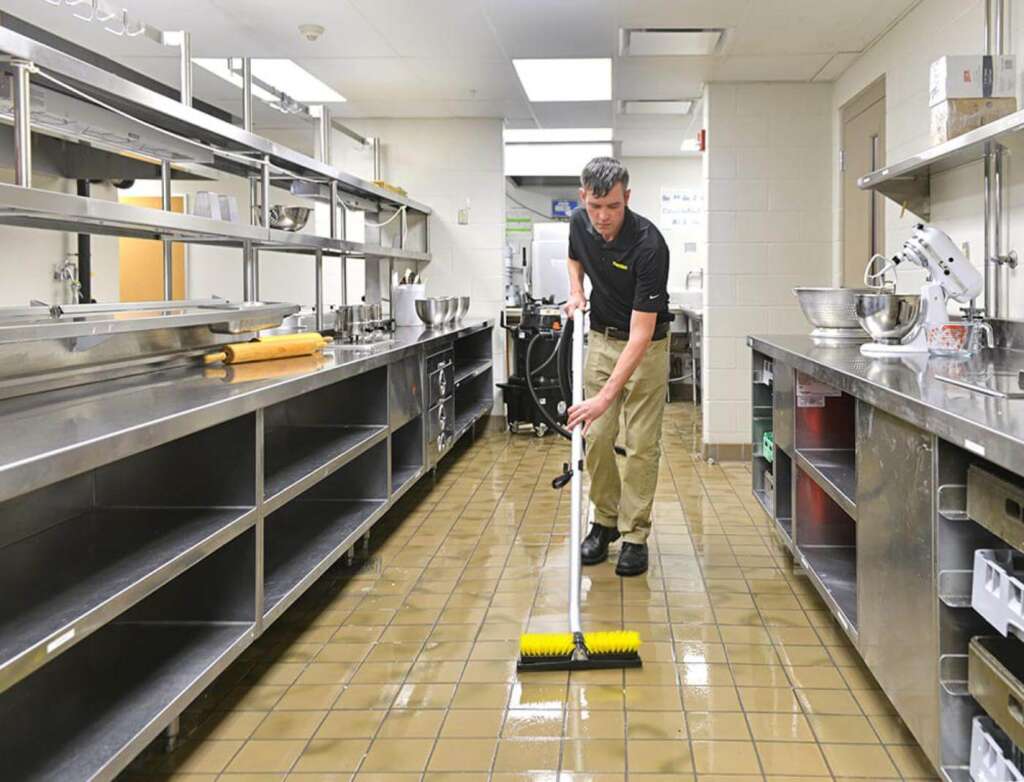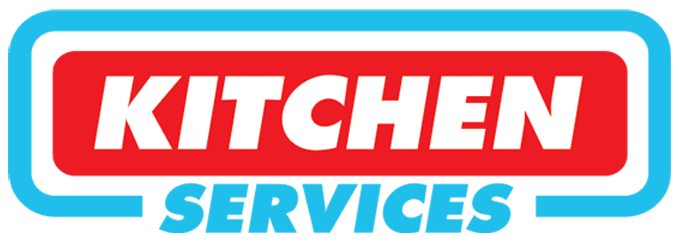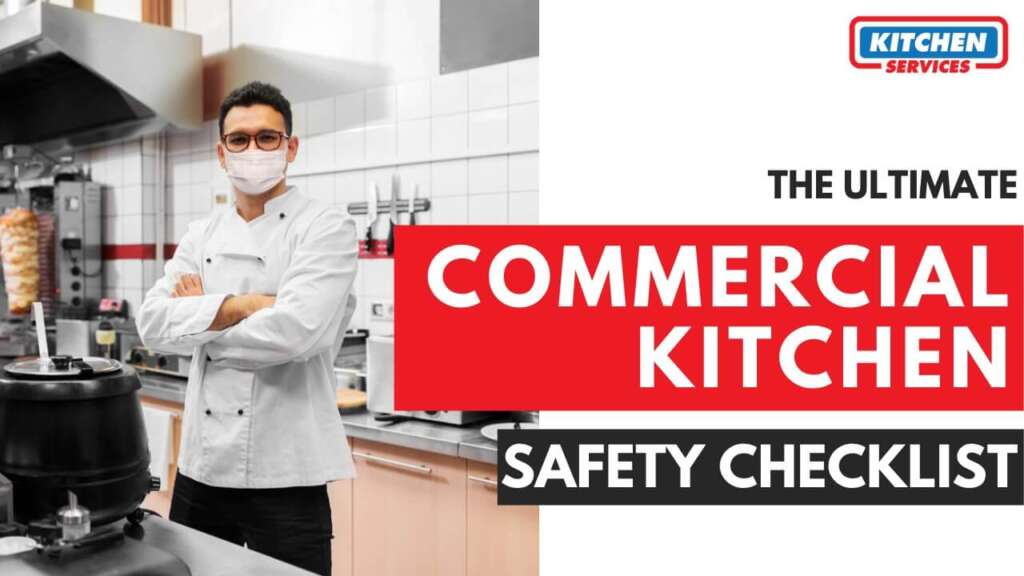We are all ready to accept the fact that health inspections can somehow be stressful sometimes. Even experienced restaurant owners sometimes also feel uncomfortable when there is an inspection going on in their restaurant. You must always empower your staff with the proper Commercial Kitchen Safety checklist because it is a great way to make sure safety protocols are being followed all around the year and when that inspection team shows up.
There are a lot of elements that you must consider while correctly cleaning your kitchen. One critical part may involve making a restaurant kitchen equipment list that directly reflects your business’s demands. Any restaurant’s equipment will help in making sure that your team can prep, cook, bake, wash, and generally perform the culinary aspects of the restaurant, day in and day out.
Commercial Kitchen Equipment Maintenance
Listed down below is the ultimate restaurant kitchen equipment list that contains the primary types of restaurant equipment that you will need to run a commercial kitchen.
1. Ovens
- Convection ovens
- Combination ovens
- Pizza ovens
- Conveyor ovens
2. Ranges and ventilation
- Gas ranges
- Electric ranges
- Ventilation
If you are looking for a Commercial Kitchen hood installers in Los Angeles, Kitchen Services offer comprehensive installation service, from helping you select the right model to install it with a focus on quality.
3. Food processors
- Batch bowl processors
- Continuous feed food processors
- Buffalo choppers
4. Mixers
- Hand mixers
- Countertop mixers
- Floor mixers
5. Slicers
6. Food prep counters and cutting boards
7. Freezers and refrigerators
8. Safety equipment
9. Storage racks and shelving
10. Restaurant kitchen supplies
11. Serving ware
12. Storage containers
13. Sinks
- Compartment sinks
- Bar sinks
- Disposal sinks
- Drop-in units
- Handwashing sinks
- Mop sinks
- Portable sinks
14. Kitchen Display System (KDS)
15. Point of sale system (POS)
16. Steam tables
17. Washing equipment
18. Sharpening stones
19. Microwave
20. Icemakers
21. Gas or electric grill
What actually is a Commercial Kitchen Safety Checklist?

Not all commercial kitchen safety checklist is the same as every restaurant is working at a different level. This checklist differs from other restaurant lists, exactly like your prep list. Prep lists are some of the separate forms that will help you in order to run your restaurant effectively, but always keep in mind that they can never help you pass any of your kitchen inspections. An appropriate restaurant kitchen inspection checklist is mostly concentrating on its standard safety actions and all the procedures for your entire staff. The best practice would be that it should always be displayed notably anywhere in your kitchen. You can also keep it in an excel file that is easy to access and edit as well so that you can update it with any of the latest protocols that are defined by any national or local health departments in the future. These checklists are always designed in such a way that they prevent food contamination as well as promote kitchen safety, your restaurant kitchen inspection checklist will always protect customers as well as staff.
Importance of Commercial Kitchen Safety Checklist
Health Inspections
Usually, health inspections are unannounced and are happens nearly 4 times a year. In case you do not pass this health inspection test it may have some serious penalties for your restaurant. Generally, it will result in a low health rating, which could affect your business, and in some extreme cases it can ultimately end up in the closure of your business and restaurant. Being a restaurant owner, you must be aware that the closure of your restaurant may result in most local print and online newspapers publishing the weekly list of restaurant inspections and all the sad details as well. Your restaurant could go viral in no time in dark light for all the wrong reasons and you would never want this to happen.
Food Safety
Not only your restaurant kitchen inspection checklist will prepare your team for any of the next health inspections, but it will also help you in creating and maintaining a standard for all sorts of safe operations that will affect your foodservice all around the year. Approximately 48 million Americans are likely to fall sick due to foodborne illnesses and the majority out of them are restaurant-related. It5 is obvious that you not only protect your restaurant, but a restaurant kitchen inspection checklist can also help to avoid food-related contamination. By implementing some major food handling and storage processes, you will never have to worry about illnesses that are spreading from your beloved kitchen. Always remember that sick customers are really bad for your business, and an efficient restaurant kitchen inspection checklist can keep your reputation unharmed.
Staff Management
Using a proper restaurant kitchen inspection checklist will set your staff up for success in order to a surprise health inspection. This checklist must be a detailed one so that your management team exactly knows what the inspection team is looking for as they walk through your kitchen. A detailed restaurant kitchen inspection checklist can also serve well as a great training tool for your staff. It will always set a standard process for safe kitchen operations and teach them all of the essential aspects related to food handling, such as proper storage temperatures, etc.
Basic things to Include in Your Commercial Kitchen Safety Checklist

While you are creating your restaurant kitchen inspection checklist, you should always include elements that make sure that your restaurant will meet the code.
Some of these basic factors may include:
- Hazard Analysis Critical Control Point (HACCP) Plan: The HACCP Plan is actually a system that will allow your restaurant operators to detect any sort of risks in their food processes that may lead to possible contamination. Integrating these plans into your restaurant kitchen inspection checklist will always control these risks and thwart foodborne illnesses if any. Apart from a one size fits all thinking, this plan will provide your restaurant’s unique menu, equipment processes, and operations as well.
- Temperatures: You must educate your staff on the proper temperatures for food and food storage. Your restaurant kitchen inspection checklist should always include all those processes that are monitoring these temperatures and what the perfect temperatures must be.
- Appropriate Hand Sanitation: it is obvious that contamination can also be transferred through your hands. So, any sort of contamination that is transferred through food handling can easily be avoided with the proper use of hand sanitizers. Your checklist must review the frequency and process in which all the kitchen staff should clean their hands and change their gloves frequently while they are working.
- Cleanliness: Your restaurant kitchen inspection checklist should also cover cleaning processes for all your kitchen equipment. It is very important to avoid food contamination as well as safety violations. You should always include how regularly your kitchen counters, ovens, grease traps, and flat tops should be cleaned to prevent fire hazards or damage to any of the equipment. You should always examine these cleaning processes with your staff.
- Overall Operations: This is the area that must be included additional processes that are unique to your business. Some restaurants may require further health inspection items, that only depends on their unique menu, customers, and operations.
Detailed elements that must be included In Your Checklist
As we said that the preventive maintenance is the key in keeping your kitchen up and in a running state. Being intentional about your equipment maintenance will help to avoid any sort of costly repairs as well as prevent health and safety damages. Every kitchen maintenance checklist is unique and will look a little different from one another, but in general, you should at least try to cover the following areas:
Griddles & Grills
We all know that a lot of commercial kitchens depend on griddles and grills in order to cook a lot of hot meals in a day. They are relatively easy to use, easy to clean and they also help maximize space in your commercial kitchen.
Some elements to add to your checklist regarding your grills and griddles may include:
- Wipe down griddles and grills after every use
- Clean burners properly
- Check grease filters properly
Dishwashers & Sinks
No matter whether you hand wash your dishes and cookware, or you run it through any commercial-grade cleaning system, the systems that you use to clean and sanitize your dishes play a very important part in maintaining a clean and orderly kitchen.
Some things to add to your checklist regarding your dishwashers include:
- Clean the filter every 15-20 days cycle
- Properly train your employees to rinse food and any sort of debris from plates and cookware before loading the dishwasher to prevent clogs and drainage issues.
- Check chemical levels such as any sort of detergent, sanitizer, rinsing aids.
- Inspect tank water and change it on a regular basis
- Look for any sort of chips, dents, or damages to your dish racks
Fryers
There are different kinds of gas or electric fryer in any commercial kitchen that serves large quantities of fried foods in your restaurant. Your countertop fryers can maximize floor space you’re your kitchens that are smaller and diners, while larger, busier kitchens may use multiple floor models to keep up with the demand for fried foods.
Your maintenance checklist should include:
- Extract dirty oil on a regular basis
- Clean fry baskets and check for any damages that occurred
- Check and clean incineration fans regularly
- Always pay close attention to the quality of the oil that you are using in the fryer
- Check for gas leaks if any
Ranges
You may disagree but the range is the most used element out of any kitchen equipment. In case it breaks down, it will not only cost you a lot of money but significantly reduce the productivity of your kitchen.
To make sure your commercial range continues to work properly, you can add these elements to your checklist:
- Grease valve knobs frequently
- Burners and grates are cleaned and secure
- Move range and clean behind it
- Regularly check if the thermostat is working properly
- Train your kitchen staff to use ranges properly to avoid any safety hazards and damages
Fridges & Freezers
Proper and careful temperature control is very important in order to preserve food and extend the life of any cold and frozen items. In case a refrigerator or freezer goes down in a commercial restaurant, it could mean thousands of dollars in lost food. You should always keep an eye on all the different elements of your commercial refrigerators and freezers as it is a key in commercial kitchen maintenance.
Be sure to include the following in your checklist:
- Look over the fridge’s door hinges and closers
- Clean gaskets
- Lubricate hinges
- Check refrigerant level
- Check and adjust defrost timers
- Check electrical connections
- Examine suction line insulation
- Calibrate thermometers
If you are looking for a Commercial Walk in Refrigerator installers in Los Angeles, Kitchen Services offer comprehensive installation service, from helping you select the right model to install it with a focus on quality. Our experienced refrigeration technicians have been installing commercial refrigeration equipment for a very long time.
Storage Spaces
Dry food storage areas should always be cleaned, and they should always be properly organized, and inspected for any sort of leaks, evidence of electrical issues, or temperature control issues.
Some things to add to your checklist regarding your dry storage spaces must include:
- Food and supplies are kept off of the floor
- All food is properly labeled about its manufacture and expiry date
- Temperatures in dry food storage spaces are up to code
- Employees are trained in FIFO food storage practices (First In, First Out)
Floor Maintenance
While you make all this list that includes every element that is inside the kitchen never forget the floor of your kitchen. The most important step in maintaining a commercial-grade kitchen floor is by keeping it clean.
Some things to add to your checklist kitchen regarding flooring include:
- Use any sort of degreaser to get rid of grease and soils from your floor
- Remove floor mats, sweep, and mop the floor on a regular basis
- Sanitize the floors
- Look for any sort of cracks, holes, or bumps in the floor that could be a tripping hazard for your staff as well as customers
- Always make sure all floor drains are draining properly and regularly.
What is a basic commercial kitchen health and safety checklist?
- Ensure proper ventilation and maintenance of exhaust systems.
- Regularly inspect and maintain kitchen equipment.
- Train staff in food safety practices.
- Maintain clean and dry floors to prevent accidents.
- Display emergency contact information and evacuation procedures.
What are the key components included in a comprehensive commercial kitchen inspection checklist?
- Check cleanliness and sanitation of food preparation areas, including countertops, cutting boards, and utensils.
- Verify proper storage and labeling of food items to prevent cross-contamination.
- Inspect kitchen equipment for cleanliness, functionality, and safety features.
- Ensure compliance with local health regulations regarding temperature control for refrigeration and cooking appliances.
- Evaluate staff hygiene practices, including handwashing facilities and personal protective equipment usage.
What are the essential measures included in the commercial kitchen food safety checklist?
- Regularly monitor and maintain proper storage temperatures for perishable food items.
- Implement strict hygiene protocols for kitchen staff, including handwashing and proper use of protective gear.
- Conduct routine inspections of food preparation surfaces and equipment to ensure cleanliness and sanitation.
- Monitor and document expiration dates of food products to prevent serving expired items.
- Implement pest control measures and maintain cleanliness to prevent contamination from pests.
What are the key areas and equipment covered in a commercial kitchen maintenance checklist to ensure smooth operations?
- Regularly inspect and clean exhaust hood and ventilation systems to prevent grease buildup and ensure proper airflow.
- Check and maintain kitchen equipment such as ovens, refrigerators, and dishwashers to ensure they are functioning correctly.
- Monitor and repair any leaks or issues with plumbing fixtures to prevent water damage and maintain sanitation standards.
- Conduct routine inspections of flooring and walls for cracks or damage that could compromise cleanliness or safety.
- Schedule professional maintenance for gas appliances to ensure they are operating safely and efficiently.
What are the key components and steps involved in implementing a HACCP checklist for kitchen?
- Conduct hazard analysis to identify potential food safety hazards in the kitchen.
- Establish critical control points (CCPs) where control can be applied to prevent, eliminate, or reduce identified hazards.
- Determine critical limits for each CCP, specifying parameters such as time, temperature, pH, or chemical concentration.
- Implement monitoring procedures to observe CCPs and ensure they are within critical limits.
What are the key components and steps involved in implementing OSHA kitchen safety checklist?
- Ensure all kitchen staff are trained in proper handling of equipment and hazardous materials according to OSHA guidelines.
- Regularly inspect and maintain kitchen equipment to prevent accidents and injuries.
- Implement proper protocols for handling and storing cleaning chemicals to minimize risks of exposure and accidents.

